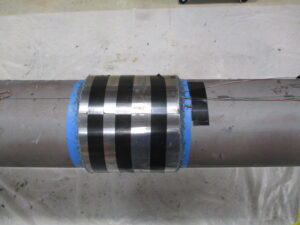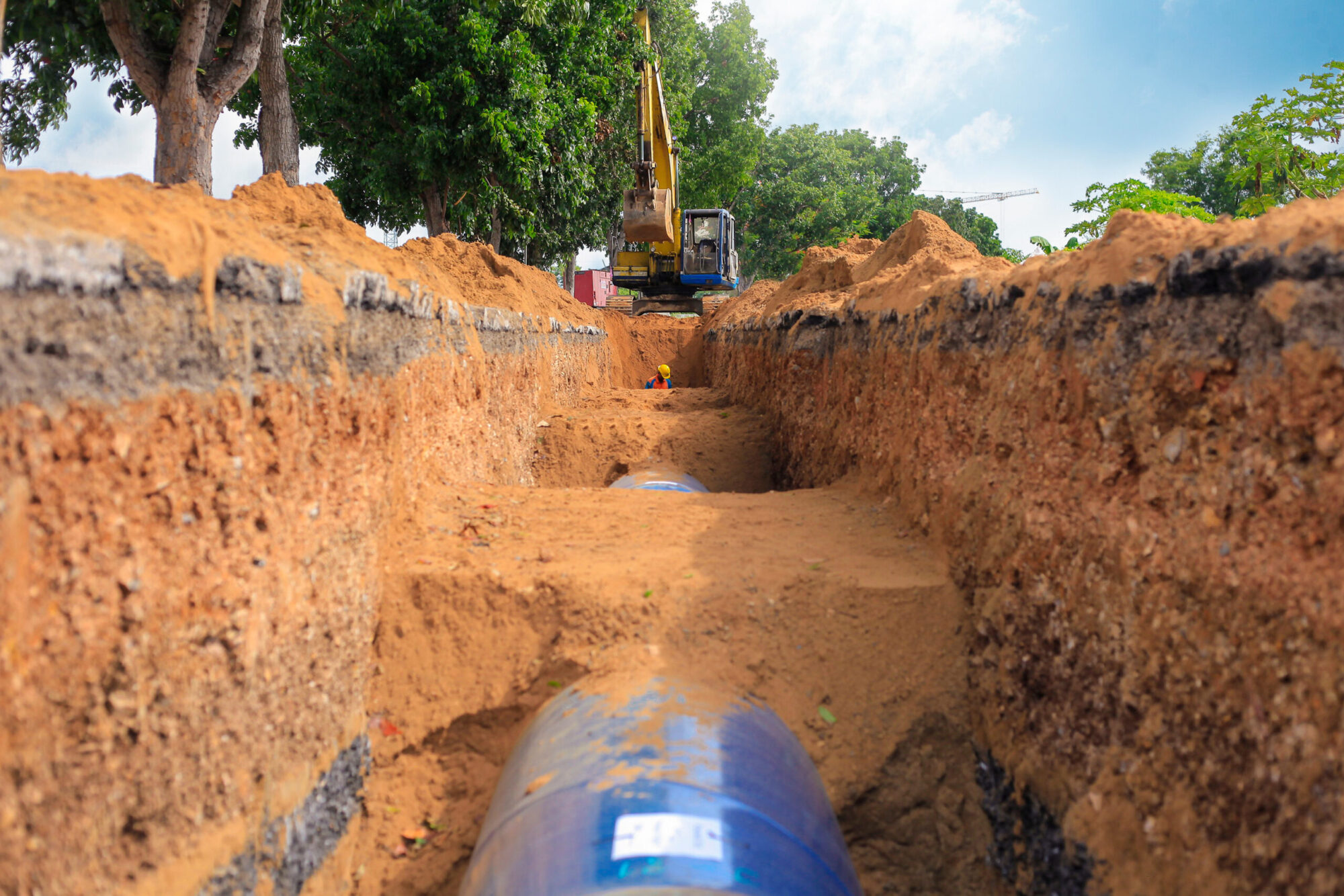Question: Wha t is Pipe Spring™?
t is Pipe Spring™?
Answer: Pipe Spring™ utilizes thin layer steel and a modern toughened adhesive system to create a laminated steel sleeve system. A two-component epoxy system is used as a filler material and to fill any area of metal loss or around any weld or other protuberance on the pipe. The resultant steel sleeve provides reinforcement to the pipe and effectively mitigates various integrity threats. It can be used as a repair system. It can also be utilized to augment existing pipe for purposes of:
- Change in design factor
- Class location change
- Pressure increase
- Providing additional known properties so that your pipe can become Traceable Verifiable and Complete (TVC) and can be properly documented
Question: Why use Pipe Spring technology?
Answer: The Pipe Spring™ system was conceived to minimize or eliminate several challenges with existing technology and to utilize several opportunities to make improvements to pipeline repairs and integrity efforts.
Existing repair options present challenges!
Issues with Welded Steel Sleeves:
Welded steel sleeves require welding. The safety of the repair could be maximized if welding near the fluids carried within pipelines could be eliminated. The preferred method’s design guidance of welding on pipe and pressure vessels as well as cyclically loaded structures) strives to eliminate all partial penetration welds, use fillet welds only for shear applications, avoid striking arcs on the body of the weldment, and using subsequent weld beads to refine grain size. Welded steel sleeves for pipeline repair applications tend to violate some of these traditional best practices. In addition, the fit up to pipe is not always perfect. The result is less then optimum performance.
Issues with Composite Repairs:
Composites repair options eliminate the welding issues but introduce another set of challenges. Composites repairs degrade over time. Both the strength and effective modulus of elasticity may degrade. Thicker repairs are required to handle the strength issue. The modulus issue is not often addressed. The architecture of specific composite repairs can result in the requirement to have fibers straighten prior to sharing the stress from the pipe. The initial stress/strain response can display a significant delay. Some systems can require significant skill and care during installation.
The advantages of Pipe Spring™:
- Thin layer steel conforms to out-of-round conditions or ovality
- Steel does not degrade over time and has isotropic properties
- The Pipe Spring system can provide axial strength
- Faster Initial stress/strain response
- Improved effective modulus of elasticity
- Pipe Spring allows for thinner repairs, easier installations, and less soil stress
- Improved cyclical performance
- Improved long term performance
- Intrinsic mitigation of potential damage to repair (laminated design)
- Ease of Installation
- Strain dependent concern mitigation
- ILI visible and the system is ILI inspectable (MFL)
- No heavy equipment needed for installation
- Not dependent on skilled welding ability or advanced installation techniques
